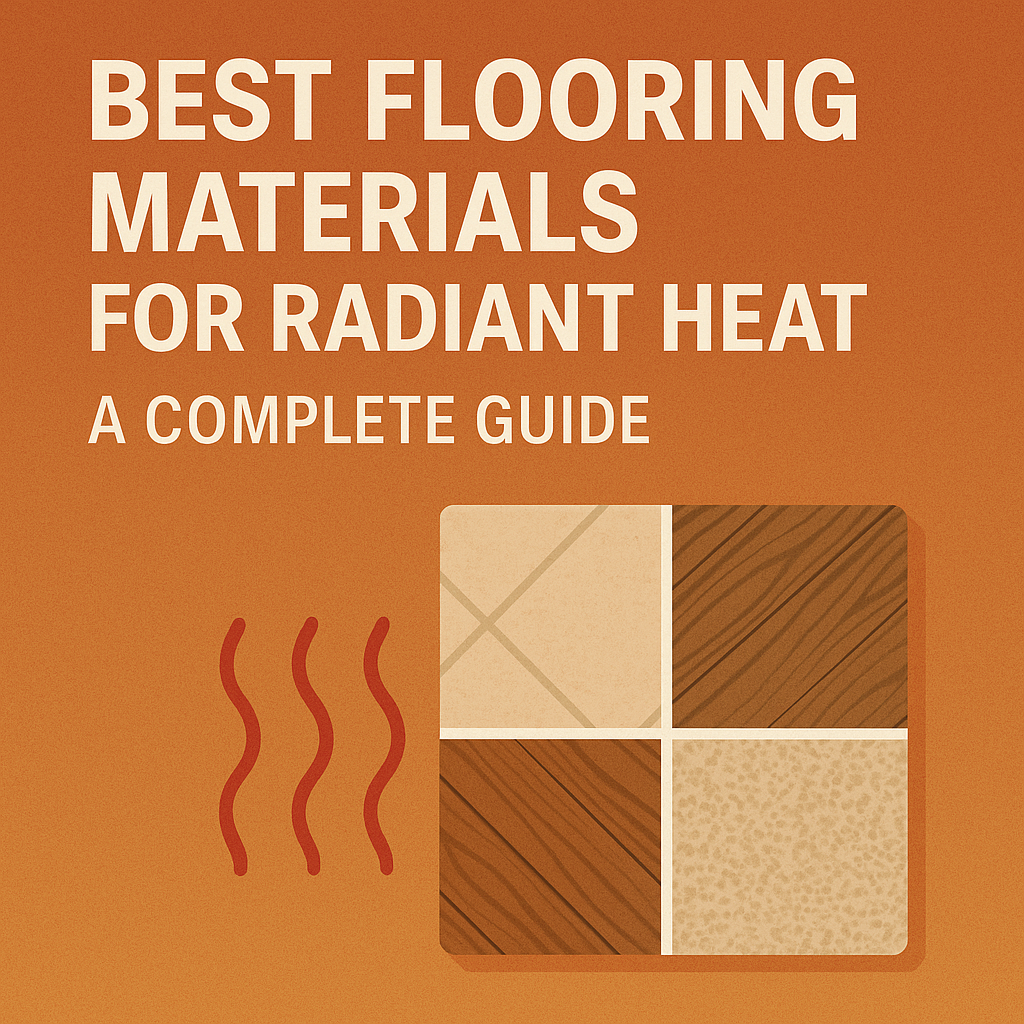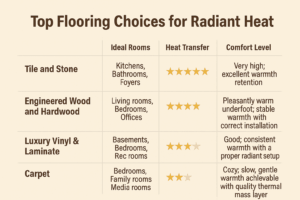Introducing EasyFloor™: The Most Efficient Radiant Heating System for Your Home
Share this story: Facebook X LinkedIn Email Introducing EasyFloor™: The Most Efficient Radiant Heating System for Your Home Are you

Choosing flooring for your radiant heating system involves balancing aesthetics, performance, and practicality. But what flooring materials work best with radiant heating—and how do you ensure optimal comfort regardless of your choice? Let’s explore.
Top Flooring Choices for Radiant Heat:

FloorHeat’s Solution: Enjoy Your Favorite Flooring with No Compromise
At FloorHeat, we’ve developed the EasyFloor System, designed specifically with a built-in cement board thermal mass layer. This unique component sits just beneath your chosen flooring material, ensuring steady heat distribution, regardless of flooring type.
Why is FloorHeat’s Thermal Mass Layer Important?
With EasyFloor, your radiant heating experience is optimized, letting you select flooring based on your style, not limitations.
Hardwood Flooring & Radiant Heat: Important Considerations**
Hardwood is a beautiful, classic flooring choice, but because natural wood responds to temperature and humidity changes, it requires extra care when paired with radiant heat. Under prolonged exposure to higher temperatures, hardwood flooring may bow, warp, or expand, leading to potential flooring damage or discomfort.
To prevent these issues, it’s crucial to use a radiant heating system engineered specifically for gentle, controlled heat distribution beneath hardwood flooring.
Why FloorHeat’s EasyFloor System is Ideal for Hardwood Floors
At FloorHeat, we specifically designed our EasyFloor Radiant Heat System to address the unique needs of sensitive flooring materials like hardwood. Unlike traditional radiant installations that run PEX tubing through thick concrete (which requires high water temperatures to effectively transfer heat), the EasyFloor System uses precision-engineered aluminum heat plates and integrated cement board thermal mass layers to efficiently distribute heat at significantly lower water temperatures—around 80°F instead of the typical 120°F or higher needed for concrete installations.
Key Recommendations for Hardwood Flooring with Radiant Heat:
Key Recommendations for Optimal Radiant Floor Performance:
Ready to design your ideal radiant heated space?
Connect with the experts at FloorHeat and enjoy exceptional comfort under any flooring you love.
Share this story: Facebook X LinkedIn Email Introducing EasyFloor™: The Most Efficient Radiant Heating System for Your Home Are you
Share this story: Facebook X LinkedIn Email Signs Your Radiant Heating System Needs Attention: Troubleshooting Tips and When to Call
Share this story: Facebook X LinkedIn Email Radiant Heating & Sustainability: Why Hydronic Systems Are Eco-Friendly As sustainability and energy
Share this story: Facebook X LinkedIn Email Radiant Heating System Maintenance 101: Keep Your System Running Smoothly A radiant heating
Share this story: Facebook X LinkedIn Email Geothermal Boilers and Radiant Heating – A Perfect Match with FloorHeat EasyFloor
Share this story: Facebook X LinkedIn Email Hydronic vs. Electric Radiant Heat – Which is Best for Your Home?